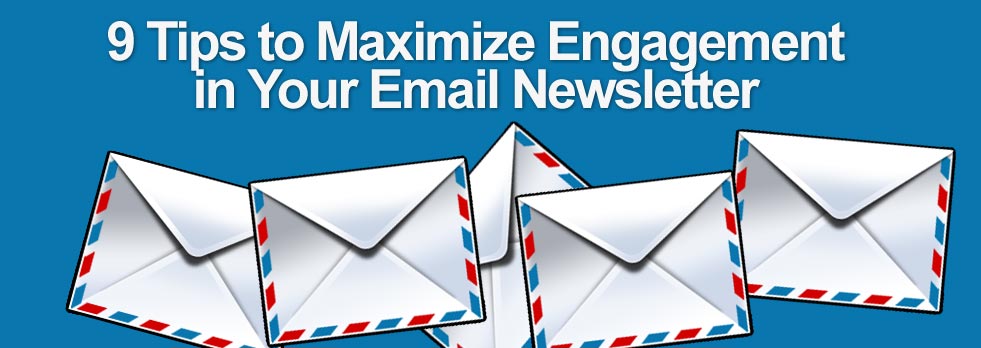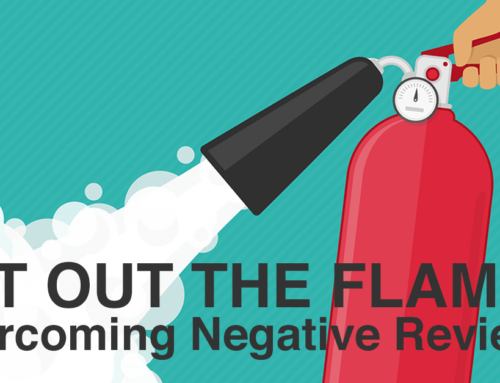Like blogging, newsletters require attention to detail if you want to truly engage your readers. I’ve been helping clients prepare newsletters over the years, and I’ve had successes and failures (if you don’t fail, you aren’t trying hard enough). Using these techniques, my projects have consistently outperformed the industry average, and we’ve been fortunate enough to grow lists, improve engagement and drive revenue. So here are 9 good ideas that can help you maximize engagement with your next email newsletter.
1. Give it away
I’ve seen it over and over: content is king. If you share useful information or products, email readers love you. If you earn trust in a relationship with your readers, it’s magical what it can do. The web is filled with tribes around topics of interest: internet marketing (Seth Godin, Todd Henry), life hacking (Tim Ferriss, Happiness Project), food (Food 52). All of these tribes were created around permission marketing, where the originator lead with information, adding tremendous value FIRST, then initiating sales. What can you give away?
2. Find a good time to send to your list
It’s exciting to see what happens if you send the right message at the right time. Back in the old days, running a commercial during prime time was gold. But now? Who watches commercials when you have a DVR and a fast forward button? When you send your newsletter, you want to catch people when they’re awake, focused and receptive to your ideas. Numerous studies have found that there are “optimal” times to send out an email blast, but results of course may vary. Starting out, you may want to try the times suggested, and you may want to split test with some others. Watch your results for open rate, click rate and sales based on your time. If something works, keep using it!
3. Segment your list
One of my clients is in insurance. He regularly shares the uninspired, awful (ugh!) newsletters from the industry – often pre-built by major carriers to be re-packaged by the local reps. Insurance agencies and brokers, like many small businesses, often represent more than one product (personal insurance, commercial insurance, health packages, auto insurance, etc.), so these canned letters have little effectiveness to the target audience (unless hitting DELETE is the goal). If I have a car policy, and you send me relevant information about keeping my car safe and my rates low, hey, I’m interested (perhaps even happy). But if you send me information about your commercial general liability too? Huh? You’re making me mad that I know you. You can solve this confusion by keeping a segmented list. Your customers are not all the same, so do the basics at first, then get more specific. Almost any tool, even a spreadsheet, will help you tag & categorize. Do it!
4. Come out swinging in your subject line
Your subject line matters. A lot. Until you have a rabid fan base (think Seth Godin), you want to entice someone to open with a teaser of what’s inside. You also need to make sure you don’t get swept into the spam bin by using the wrong words. Find a headline review site and try some variations. Even email systems like MailChimp have suggestions, or you can read articles online about what’s working. Hint: it’s not MY COMPANY NEWS (make it about the reader, not about you).
5. Don’t format your email newsletter like an eye chart (readability matters)
I used to have a web designer that worked for me who ate lots of carrots. Or at least he designed that way. TINY fonts all over – sure, it looked cool, but it was impossible for anyone over 25 to read. Stick to a simple, consistent, readable layout and font size that everyone can read. Lately, I’ve been starting at 15px for the body and growing from there for headlines. If it’s not readable, no one will read.
6. Get the phone
As a corollary to formatting for readability, don’t neglect mobile marketing. If your newsletter doesn’t look good on a mobile phone, you’re probably alienating half of your potential audience. Mobile is in. Test for both desktop and mobile, and make sure mobile looks REALLY good (not just OK). You’ll also want to consider newsletter length (infinite scrolling sucks), format (single column works best) images you embed, multimedia components and your call(s) to action.
7. Just do it
Calls to action (CTAs) are critical. As I wrote previously, one CTA is best – what are you trying to get the user to do? Buy something? Sign up for something? Visit your website? Keep it simple and target appropriately. Also, you can repeat the CTA in a variety of ways. I like to link the header image to the same CTA as a button at the bottom. Include at least one text link in the copy to the CTA. Add another link in the footer. Lots of options to do the same thing increase the likelihood the user can find it.
8. Lather. Rinse. Repeat.
Two things I want to stress: you need to send your newsletter more than once, and you need to send your news more than once. That is, you can see which readers did not open the newsletter and send it again (change the subject line to increase your odds of an open). Depending on the time you first sent your newsletter, someone may have been out of the office or too busy. Sending again gives them another chance to see it. For example, if you sent to the list on Tuesday, send again to the unopened list on Friday night. The second part is to be regular in sending news. It’s difficult to commit the time, but the real results come when you email on a regular basis (same thing with blogging). Once a week, once a month, once a quarter – how much time can you afford for it? Note, most likely email marketing is among your best values. It’s inexpensive and can be effective…provided you have something to say and someone who might be interested (if not, it’s spam).
9. For good measure
“Every line is the perfect length if you don’t measure it,” wrote Marty Rubin in The Boiled Frog Syndrome. It’s no surprise that I’m a fan of analytics (the ones that matter). You should watch your results, especially if you’re split testing, to make sure your list grows, your results improve (e.g., revenue, reputation) and your audience engages with you. If your list shrinks, see if you can determine why. If readers are clicking on a particular subject, consider adding more content in that area. If readers open on Thursday more than Friday, send more on Thursday. Use your statistics to improve, because if you don’t, your numbers will eventually taper. Do more of what works, less of what doesn’t.
Go for it on your next email newsletter and see how your results change…





![Video Engagement [Infographic]](https://twistedpuppy.com/wp-content/uploads/2017/08/twisted-puppy-blog-video-engagement-1-500x383.png)


Leave A Comment